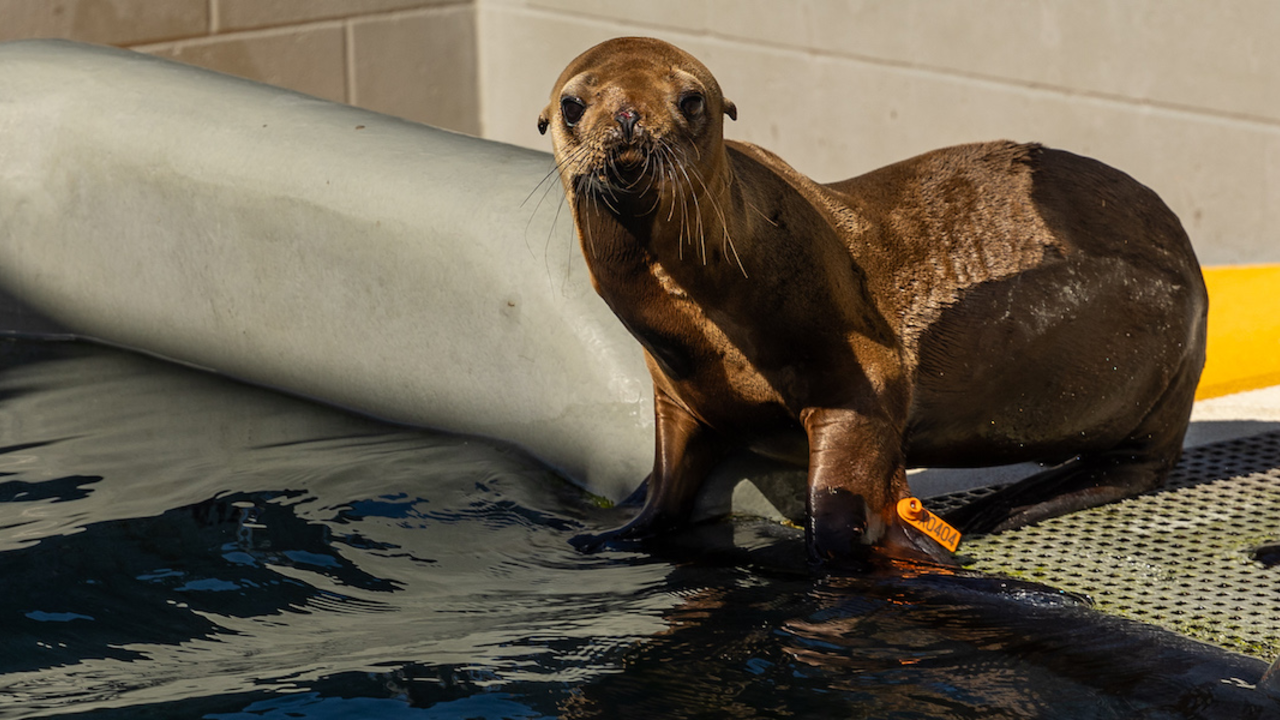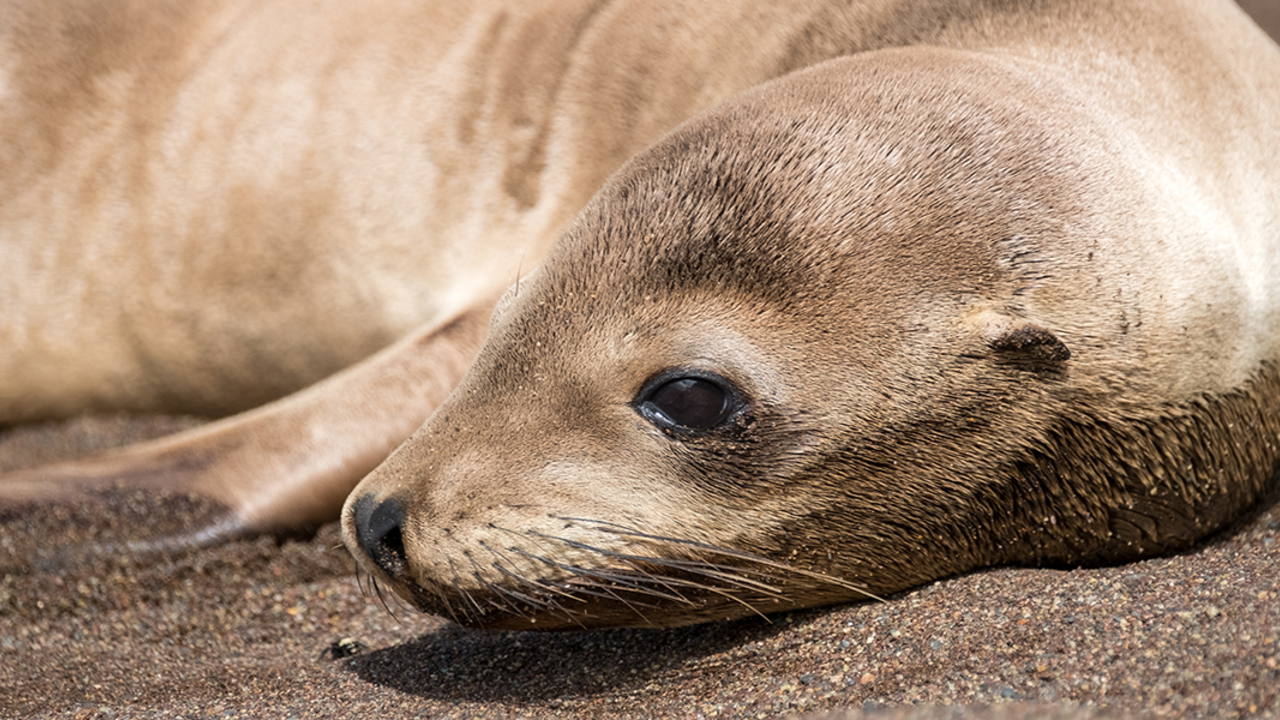Rescue on Alcatraz Island
Meet 'Alcatraz' the sea lion

Bill Hunnewell © The Marine Mammal Center
OK, so a sea lion "walks" onto Alcatraz Island. It sounds like the beginning of a joke, but it’s actually the start of a wonderful story of partnership and conservation.
On a chilly, gray morning in late February 2024, before guests arrived, National Park Service (NPS) biologist Lidia D’Amico grabbed her binoculars and radio and began walking her customary loop of the island’s roads.
On a typical day, she might spend her walk birdwatching or checking on the island’s cormorant colonies. On this day, however, she spotted something strange: a “lump of a figure” perched on a ledge of the old incinerator on the island’s northwest side. A closer look revealed the unknown object to be a juvenile sea lion, a rare sighting on the Rock, and rarer yet because the creature was so far out of the water.
“This sea lion had hauled itself all the way up the cliffs and wasn’t moving, which I knew was unusual,” D’Amico explains.
Sea lions and seals are the most frequently observed marine mammals within the Golden Gate National Recreation Area (GGNRA). D’Amico often sees species of large marine mammals (sea lions, harbor seals, and whales) feeding in the water, but her discovery in February was the first time she had seen a sea lion actually on the island.
Alcatraz Island is not a hospitable place for mammals, since it's exposed to harsh conditions and lacking a permanent source of water. As D’Amico notes, the island lacks a beach or other “hauling out” site where sea lions can rest. A small rocky outcropping around 100 yards off the north side of the island, dubbed “Little Alcatraz” by park rangers, is used by 7 to 8 harbor seals during low tide. But the island is ruled by birds, with supporting roles played by salamanders, banana slugs, and (very) small mammals, like deer mice.
Upon returning a few hours later to check on the unexpected visitor, D’Amico found the sea lion unmoved and called The Marine Mammal Center, located in the Marin Headlands. Even with the help of fellow park rangers, it was no small feat to load the 40-pound pup into a crate (normally used to move stranded brown pelicans) and then onto a mainland-bound ferry. Once safely ashore, the pup was picked up by staff from The Marine Mammal Center, who transported him to their marine animal hospital in the Headlands.
The sea lion arrived with an abscess and “other health ailments associated with general malnutrition,” said The Marine Mammal Center's Giancarlo Rulli. He joined 150 other marine mammals under the Center’s care.
For the first month after his rescue, his condition was “guarded,” and he was slow to recover. However, with treatment and feedings provided by veterinarians, staff, and volunteers, he began to heal and gain weight. In mid-April, after two months of treatment, a plump and healthy sea lion pup waddled out of a crate onto a remote beach at Pt. Reyes National Seashore. This was release day; the once malnourished pup had been cleared to return to the wild.
Rehabilitated, he plunged into the waters of his new life with a new name: Alcatraz, the sea lion.
Thanks to the dedicated effort of the many people who helped Alcatraz along his journey to recovery. From his initial discoverer, NPS biologist Lidia D’Amico, to a team of park rangers who shepherded him off the island, and finally to the vets, staff, and volunteers at The Marine Mammal Center who nursed him back to health—the unlikely reverse-escapee to Alcatraz now has a second chance to live and thrive in the wild.
If you find a marine mammal which appears to be sick, in distress or injured within the GGNRA, contact The Marine Mammal Center and always be sure to follow these guidelines for safe wildlife viewing:
Keep Your Distance: Give marine mammals space to rest by enjoying them from a safe distance of at least 150 feet both on local beaches and in the water, and keeping dogs on a leash.
Call the Experts: If you see a marine mammal in distress, do not intervene. Instead, call The Marine Mammal Center’s hotline at 415-289-SEAL (7325). Experts at The Marine Mammal Center will monitor the animal and, if necessary, send trained responders to rescue it safely.
Use Your Zoom: It’s OK to take photos and admire the animals, but if an animal reacts to your presence, then you’re too close. No SEAL-FIES please!

